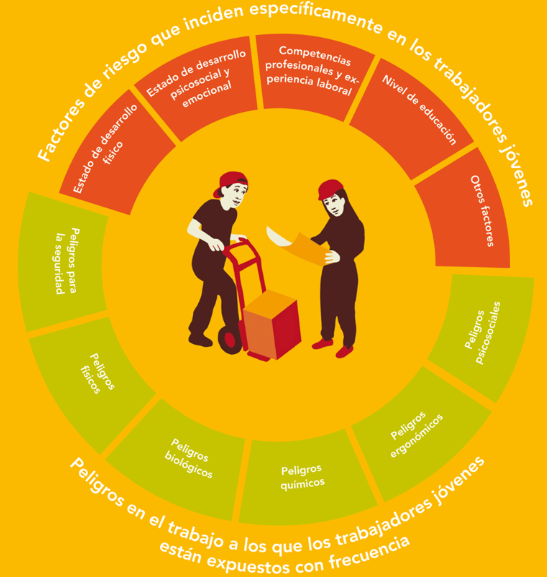
Safety and health at work, one of the keys to reducing child labor and protecting adolescent workers
28 de April de 2018
World Day Against Child Labor
Share
ILO urges to ensure access to safe, healthy and dignified employment for young workers who meet the age allowed for admission to employment.
Within the framework of World Day for Safety and Health at Work, the ILO calls to make visible the need to protect young workers (15 to 24 years old) through the global campaign "Safe and healthy generation", which proposes adopting a concerted and integrated approach between the fight against child labor and the promotion of a culture of prevention in terms of safety and health at work.
Compliance with safety and health measures at work in activities and work spaces allows us to reduce not only the dangers and risks, but also the human and economic cost of accidents and diseases that destroy the general well-being of a person and the economic stability of companies and governments.
| The most dangerous work sectors for young people are:
|
Currently, in most Latin American and Caribbean countries, the highest figures for child labor are concentrated in the adolescent population, between 15 and 17 years of age, and, although they are of the age allowed for admission to employment, a large part of the jobs in which they participate do not comply with the necessary health and safety standards or involve activities that are dangerous and prohibited for them.
Young people between 15 and 17 years of age who work continue to develop in various fields, therefore, injuries or accidents can be even more shocking than if they had them during their adult lives, since they will hinder their personal and professional growth early by causing damage. , many times, irreparable.
For example, a young worker who suffers from some type of deficiency as a result of an illness or work accident could see his active participation in society limited, lose his investment in education and the opportunity to continue his training, develop emotional and psychological conflicts and become a major concern to your family.
To understand the dimension of this situation, it is important to know the specific risk factors for safety and health at work that young workers face. These include: i) physical, psychosocial and emotional development; ii) professional skills and experience, which enable them to understand the health and safety hazards and risks associated with their type of activity; iii) level of education, which distances them from or exposes them from informal jobs; iv) sex and age; v) immigration status; among others.

Protecting adolescent workers and ensuring decent youth employment in the region implies that governments, employers 'and workers' organizations, and civil society work together to achieve Goal 8.8 and Goal 8.7 of the 2030 Agenda on promoting environments. safe labor for all workers by 2030 and end all forms of child labor by 2025, respectively.
An opportunity for joint and articulated work is the creation of professional training programs that include occupational health and safety issues, that sensitize and encourage young people to be promoters of a culture of prevention that helps them identify and not agree to perform dangerous activities or in poor working conditions, etc.
In this sense, implementing and reinforcing focused and demanding measures for the safety and health at work of young people in the region will help a broader group experience safe, healthy and dignified jobs.
For more information, access the interactive ILO infographic here : “Occupational safety and health: why are young people exposed to risks?”.
We also invite you to see the virtual presentation “How to improve the school-work transition and face the challenge of permitted adolescent work” by Ernesto Rodríguez, Director of the Latin American Center on Youth, here .
Comments

World Day Against Child Labour: Latin America and the Caribbean seeks to accele...
12 de June de 2023
On the International Day Against Child Labour, this 12th of June, the Ministries of Labour, employers and workers organizations, of Latin America and...

10 measures to strengthen social protection systems to end child labour in Latin...
10 de June de 2022
To achieve the elimination of child labour, a systemic approach and effective policies that strengthen social protection systems, education and decent...

Crisis caused by COVID-19 could cause significant increase in child labor in Lat...
11 de June de 2020
Lima / Santiago - The devastating impact of COVID-19 that generates a reduction in income and high levels of economic insecurity in families could gen...

How to respond to child labor in the framework of the COVID-19 pandemic in Latin...
09 de June de 2020
This Wednesday, June 10 at 9:30 am (GMT-5) , the interagency discussion “Crisis and child labor” will be held from Zoom , in which specialists from th...

Haitian children and adolescents fight against child labor
19 de June de 2018
The International Labor Organization (ILO) in Haiti and Engagement Participation Kapasite (ENPAK) brought together around 75 children and adolescents...
